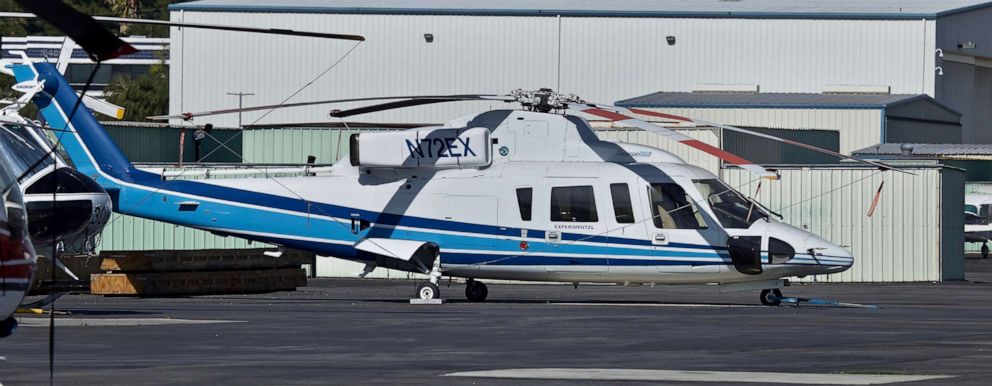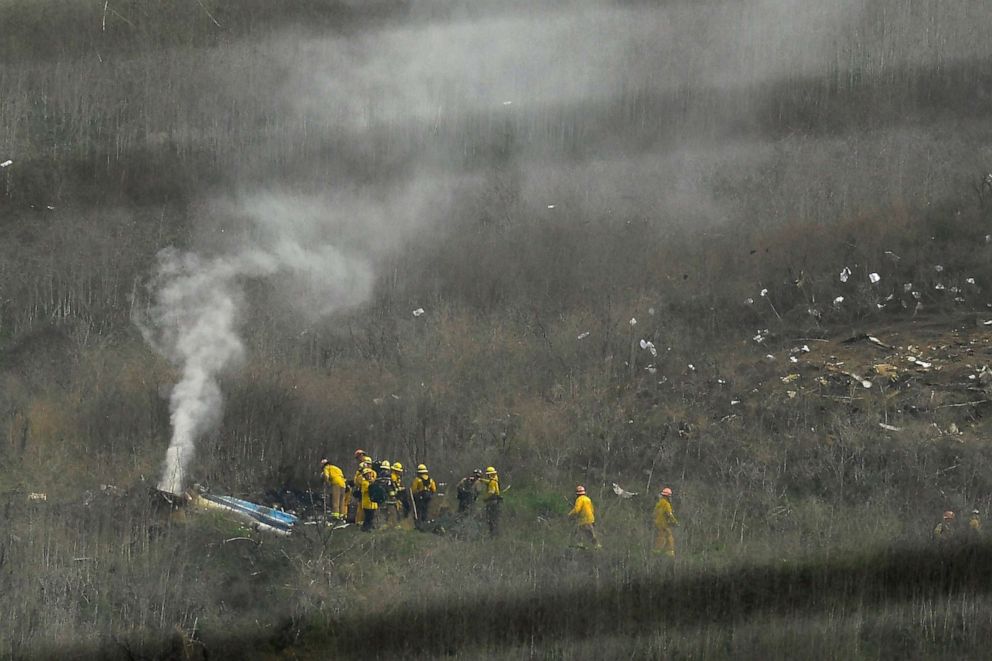Kobe Bryant's fatal crash prompts calls for tighter safety measures for helicopters
Officials are still working to determine the cause of crash that killed nine.
While investigators are still working to determine what brought down the helicopter that killed Kobe Bryant, his 13-year-old daughter Gianna, and seven others, aviation safety advocates are calling for tighter protocols and regulations for helicopters.
National Transportation Safety Board investigators spent most of Monday combing through the wreckage of the Sikorsky S-76B aircraft in Calabasas, California, but their full report on the accident will likely not be available for several months, according to Gary Robb, an aviation attorney who has represented families of victims of helicopter crashes.
Robb said that there could have been many factors behind the crash, including the foggy weather and mechanical failure, however, he said the helicopter industry is in dire need of better oversight to prevent future deaths.
"We are a helicopter-centric country, and we don't do enough for safety," he said.
The copter involved in the California crash was built in 1991 and previously owned by the state of Illinois, according to Federal Aviation Administration records. It was last registered to Island Express Holding Corporation and last had a certification in 2015, according to FAA records.
Island Express and Lockheed Martin, which manufactures the Sikorsky S-76B, both issued statements stating they are working with investigators.
"Safety is our top priority; if there are any actionable findings from the investigation, we will inform our S-76 customers," Lockheed Martin said in its statement.
The Sikorsky S-76B has a strong safety record since it was first manufactured in the '70s, but helicopters in general experience more maintenance issues than other aircraft due to the extreme vibrations they experience during flights, Robb said. The current annual mandatory routine inspections for the motor, cables and other equipment aren't enough to ensure they are in working order, he said.
"We've seen in the past. Like any other helicopter, it can have a part or system fail without warning," Robb said.

The U.S. Helicopter Safety Team, a safety group made up of FAA and helicopter industry members, reported in December that the number of non-fatal helicopter accidents in the U.S. had steadily declined from 116 in 2013 to 95 last year. However, the number of fatal helicopter accidents has remained relatively unchanged during that period, with around 20 a year, according to their report.
Robb said half of the world's helicopter use is U.S. based, but too many times it's being used unnecessarily and without thorough clearance. He gave a hypothetical example where a medical helicopter would be used to assist with a highway accident caused by a blizzard, with the notion that it would be faster and safer to get to the scene by air.
"It makes no sense to send a copter into conditions that caused the accident in the first place," he said. "It's better to send ground transport."
During his 2018 appearance on the podcast "The Corp with A-Rod and Big Cat," Bryant told former Major League Baseball star Alex Rodriguez that he used helicopters to travel so he could spend more time with his children after being stuck in traffic on the roads.
"I was sitting in traffic and I wound up missing like a school play, because I was sitting in traffic … I had to figure out a way where I could still train and focus on the craft but still not compromise family time," he said.

Robert Clifford, a senior partner of Clifford Law in Chicago, which specializes in aviation law, said there is a host of new technology that has been available to increase helicopter safety. He cited the Terrain Awareness and Warning System, or TAWS, which provides pilots with a warning system if the copter gets close to terrain, such as a hill, as a key piece of equipment that has saved countless lives.
Current FAA regulations mandate a TAWS installation in helicopters that conduct "air ambulance operations," according to an agency spokesman. Clifford said it was unclear if the Sikorsky S-76B involved in the crash had one installed.
"Whenever you add the systems like TAWS to an aircraft you are improving the level of safety in that aircraft," he said.
Clifford said he pushed the federal government to make the tech mandatory in all helicopters.
The U.S. Helicopter Safety Team said it is working on several plans to curb the number of copter accidents including implementing more workshops for pilots, and a review of pre-flight inspections.



